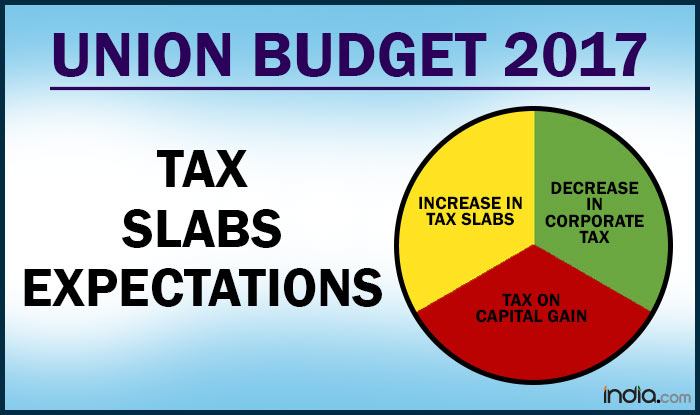Union Budget 2017 on February 1: Top 3 significant tax changes expected from Arun Jaitley in this Budget
Union Budget 2017 will be proposed on February 1, 2017 marking an end of the colonial way of proposing budgets in the end of the financial year.

The Union Budget 2017 is all set to be proposed on February 1, 2017. This incredibly important event will occur a month before its usual annual schedule of February 28 because of the Assembly Elections 2017 in Uttar Pradesh, Punjab, Uttarakhand, Goa and Manipur. The Union Budget 2017 is a combined budget, which includes the Railway Budget 2017 as well as the fiscal budget. Apart from the assembly elections, this significant change in the timeline of the annual Union Budget is to complete the spending plans and tax proposals before the beginning of the new financial year in April 2017. The Union Budget 2017, to be presented by Finance Minister Arun Jaitley, is highly anticipated mainly to get an idea of the path ahead of demonetisation and the steps the government plans to take to put the economy back into speedy growth after seeing months of inflation.
However, there is one front of the budget, which seems to be moderately predictable – the changes in taxation. The Narendra Modi government has already given the nod for the Goods and Service Tax or GST to be rolled out in July 2017, which indicates that there will be no concession in indirect taxes. Here are three significant tax changes that may occur in the Union Budget 2017.
1. Changes in Individual Tax Slabs

With the execution of demonetisation and the plans of increasing the tax for goods and services, a change in the individual tax slabs is highly anticipated. Arun Jaitley is likely increase the tax exemption slab to benefit the middle-class. The post demonetisation phase is expected to be taxpayer-friendly. According to speculations, the tax slabs in the Union Budget 2017 are expected to be increased from Rs 2.5 lakh to Rs 4 lakh for individuals and Hindu Undivided Family or HUFs, and from Rs 3 lakh to Rs 5 lakh for senior citizens.
2. Changes in Corporate Tax Rate
In addition to the increased limit in tax slabs, which will benefit individuals and small businessmen, corporates are also expecting a reduction in tax. In the Budget Speech of 2015, Arun Jaitley had revealed the NDA government’s plans of strategically reducing taxes from 30% to 25% in the next four years. So this initiative began in last year’s budget, where the corporate tax was slashed from 30% to 29%. This year the tax rate is expected to be cut down to 28%. A good sign if this continues over the next two years.
3. Tax on Capital Gains
Apart from these two points, another important change which may be proposed in the Union Budget 2017 is the change in the tax on capital gains. Prime Minister Narendra Modi revealed recently that certain financial income will be taxed. Previously the taxation regime followed in capital markets was that all transactions for listed shares on exchanges are subject to a securities transaction tax (STT). However, this tax was not related to the capital gains received on trading.
The tax on capital gains, which will be introduced in the Union Budget 2017 will begin taxing the long-term investments made in the equity market by both domestic investors as well as foreign investors. While these expectations on the taxing front are mixed with highs and lows, people are hoping to have some relief in individual and corporate taxation and are highly expectant of the Modi government. Watch this space for the live coverage of the Union Budget 2017.




 →
→











0 comments:
Post a Comment